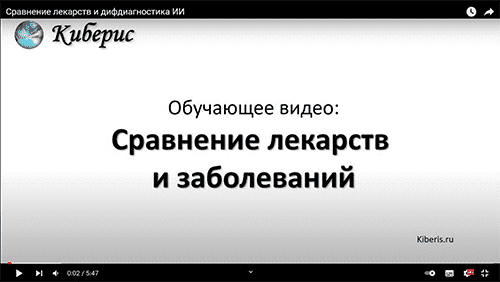Distinctive symptoms
Register , to see more distinctive signs of diseases and studies100% —
Register , to see more distinctive signs of diseases and studies— 100%
bitten wound
45%
—
fainting —
84%
pain in the wound
33%
—
swelling of the extremities —
82%
soreness of the skin
27%
—
kidney diseases —
82%
rabies
26%
—
disorders of consciousness —
80%
laceration
24%
—
intoxication —
78%
bites
23%
—
coma —
77%
puncture wound
23%
—
abrasion —
75%
the feeling of a fight
20%
—
compression in the body —
74%
snake bite
20%
—
intoxication of alcohol —
72%
fractures of the forearm bones
20%
—
swelling —
68%
burning in shoulders
20%
—
myoglobinuria —
60%
pain in the legs
19%
—
trauma
16%
74%
vaccination
19%
—
red rash on the body —
57%
fracture of the lower leg
18%
—
patient's condition —
55%
blood loss
15%
—
waxy skin color —
55%
bleeding
15%
—
numbness of the extremities —
54%
leg injury
14%
—
very pale —
52%
traumatic neuritis
14%
—
bubbles on the skin —
52%
anesthesia
14%
—
red spots on the skin —
52%
fractures of the bones of the foot
14%
—
numbness with pain —
51%
pain in the wrists
14%
—
skin is coming off —
51%
neurological disorders
13%
—
interruptions in the heart —
50%
scratches
13%
—
feeling of heaviness in the head —
49%
burning in his hands
12%
—
head severe —
49%
staphylococcus aureus
12%
—
increased potassium —
49%
moves the jaw
12%
—
acute renal failure —
49%
general narcosis
12%
—
increased sodium —
49%
burning in the legs
12%
—
falls to the floor —
48%
neuritis of the facial nerve
12%
—
squeezes his legs —
48%
cut wound
12%
—
multiple organ failure —
48%
all vaccinations
12%
—
bursting —
47%
skin anesthesia
12%
—
decrease in creatinine —
47%
dental injuries
11%
—
inhibition —
47%
pain in the forearm
11%
—
swelling of the whole body —
47%
pain in the fingers
11%
—
rash on the body —
46%
pain in the fingers
11%
—
dry mouth —
45%
pain in the shins
11%
—
dislocation —
45%
hip pain
11%
—
cold skin —
45%
nerve damage
10%
—
worse after midnight —
45%
bruise
10%
—
pectoris cardiac dyspnea —
45%
arterial bleeding
10%
—
limbs pain —
45%
neuritis
10%
—
small rash —
45%
facial pain
10%
—
illness after hypothermia —
44%
feeling of uselessness
10%
—
low body temperature —
44%
no consciousness
10%
—
skin color
8%
52%
congestion purulent wounds
10%
—
wet skin —
43%
pain in the arms and legs
10%
—
traumatic brain injury —
43%
traumatic shock
10%
—
mind —
43%
pain in the foot
10%
—
forced situation —
43%
neurological pain
9%
—
red rash —
42%
burns
9%
—
head injury —
42%
joint pain
9%
—
sensations in the hands —
42%
suppuration of the skin
9%
—
pale skin —
42%
streptococci
9%
—
hematoma —
42%
neuralgia
9%
—
is worse at 10 am —
42%
oily skin
9%
—
subfebrility —
42%
vascular damage
8%
—
pulsates —
41%
hypotension
8%
—
consumes alcohol —
41%
thrombosis
8%
—
pedantry —
41%
joint diseases
8%
—
destructive behavior —
40%
skin condition
8%
—
arterial occlusion —
40%
presses
8%
—
kidney failure —
40%
inflammation
7%
—
polytrauma
11%
51%
bites the hand
7%
—
serious condition —
40%
skin spots —
40%
nausea vomiting —
39%
dependence on the doctor —
38%
dyspnea —
38%
chronic kidney disease —
38%
angiopathy
11%
49%
worse in morning —
38%
scarring —
38%
worse during day —
38%
feeling of bruising —
37%
nausea —
37%
consequences of injuries —
37%
vomiting —
36%
dryness —
36%
high temperature —
35%
onset of illness —
34%
muscle damage
9%
42%
drug disease —
33%
consequences of taking medications —
32%
sensations in the legs
9%
40%
blue skin
12%
40%
acute pain
8%
35%
necrosis
8%
35%
practical
7%
34%
impaired arterial function
7%
34%
bone defects
16%
43%
skin sensations
11%
37%
blood diseases
7%
33%
skin problems
10%
33%
bone fracture
19%
39%
wound
18%
36%

